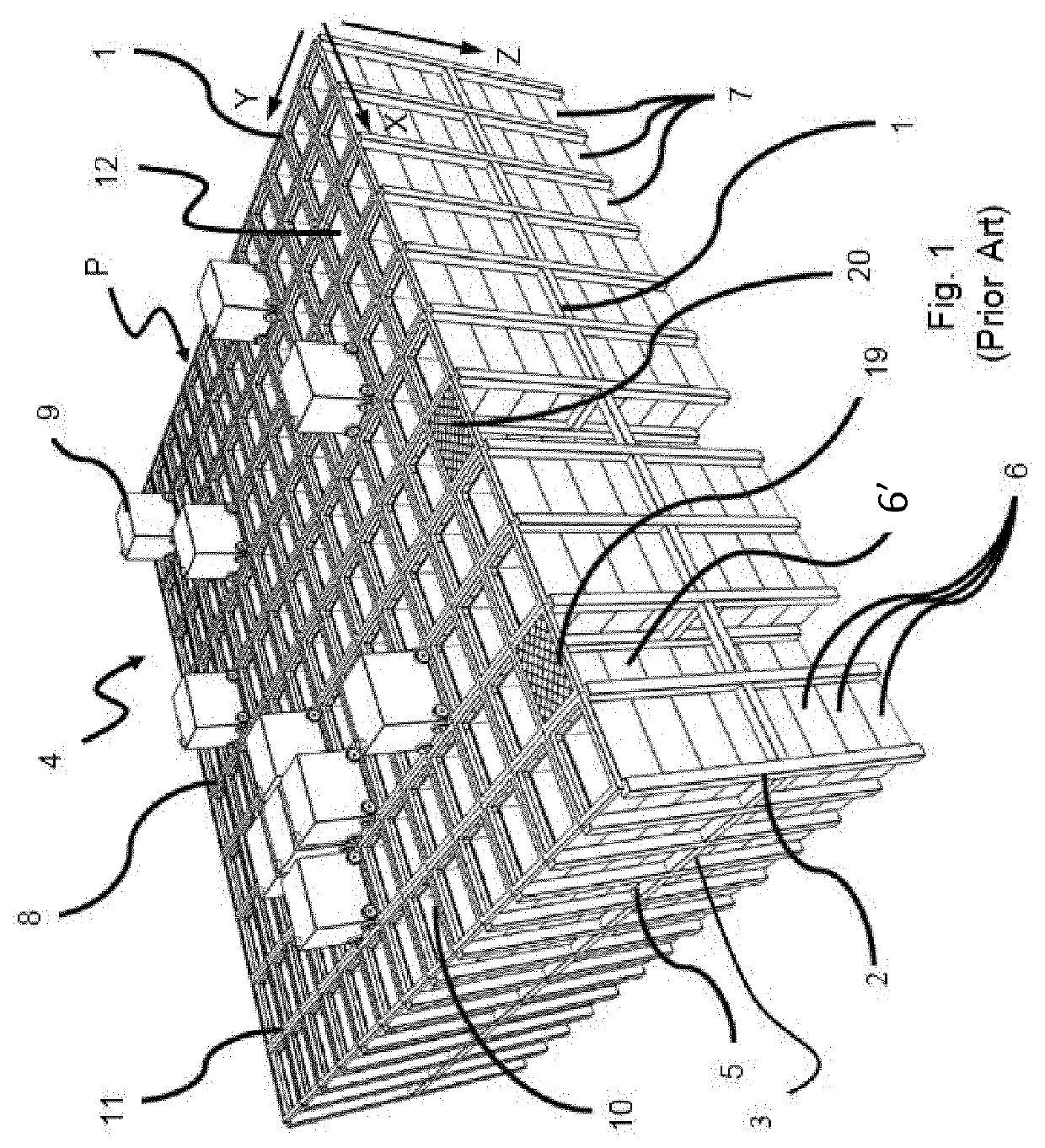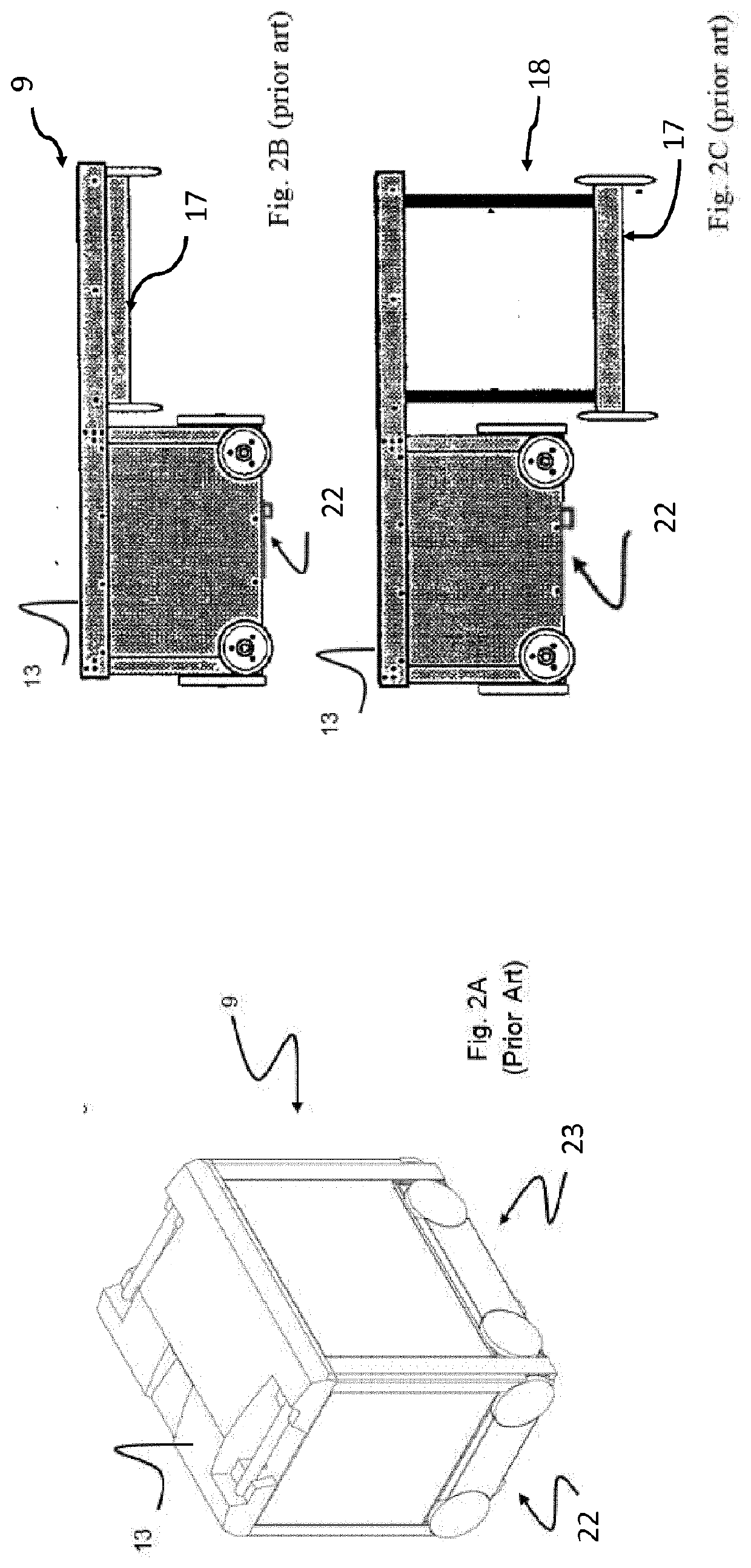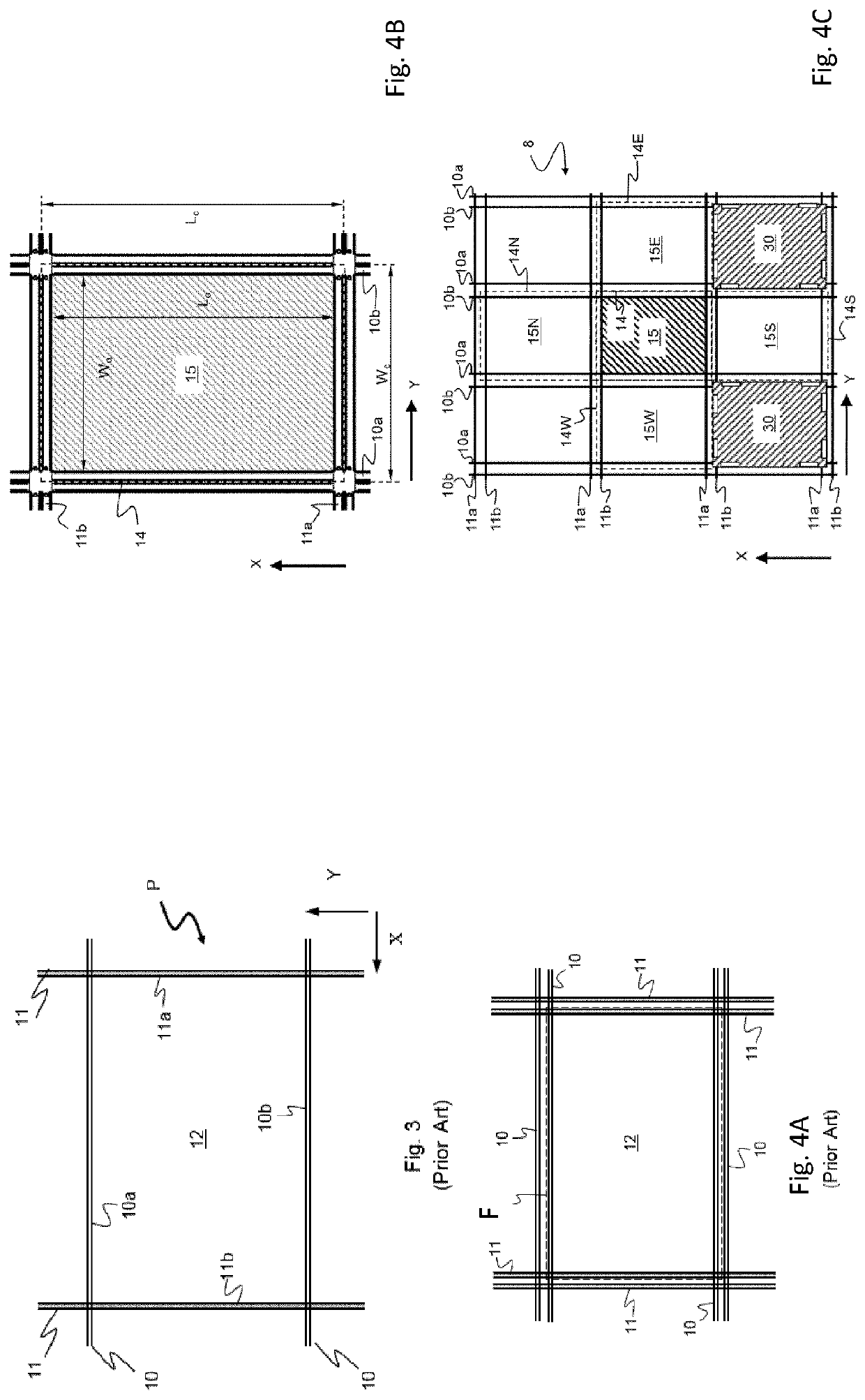Container handling vehicle with first and second sections and lifting device motor in second section
a technology of lifting device and container, which is applied in the direction of conveyors, transportation and packaging, storage devices, etc., can solve the problems of robots being more unstable than single cell robots, robots tilting excessively, and single cell robots not having any available space for larger hub motors. , the cost of bldc cards is quite high, and the overall cost of the container handling vehicle can be reduced.
- Summary
- Abstract
- Description
- Claims
- Application Information
AI Technical Summary
Benefits of technology
Problems solved by technology
Method used
Image
Examples
Embodiment Construction
"d_n">[0130]In the following, embodiments of the invention will be discussed in more detail by way of example only and with reference to the appended drawings. It should be understood, however, that the drawings are not intended to limit the invention to the subject-matter depicted in the drawings and that features described in one drawing are not necessarily dependent on the presence of other features shown in the same drawing but can be combined with features from embodiments of other drawings.
[0131]Referring to FIGS. 3 to 4C, top views of two different rail systems of the automated storage and retrieval systems are shown.
[0132]The rail system forms a grid structure or grid pattern in the horizontal plane P, see FIG. 1. The grid 4 comprises a plurality of rectangular and uniform grid locations or grid cells 14 (see FIG. 4B), where each grid cell 14 comprises a grid opening 15 (i.e. the upper end of a storage column 12) which is delimited by a pair of opposed rails 10a, 10b of a fi...
PUM
 Login to View More
Login to View More Abstract
Description
Claims
Application Information
 Login to View More
Login to View More - R&D
- Intellectual Property
- Life Sciences
- Materials
- Tech Scout
- Unparalleled Data Quality
- Higher Quality Content
- 60% Fewer Hallucinations
Browse by: Latest US Patents, China's latest patents, Technical Efficacy Thesaurus, Application Domain, Technology Topic, Popular Technical Reports.
© 2025 PatSnap. All rights reserved.Legal|Privacy policy|Modern Slavery Act Transparency Statement|Sitemap|About US| Contact US: help@patsnap.com



